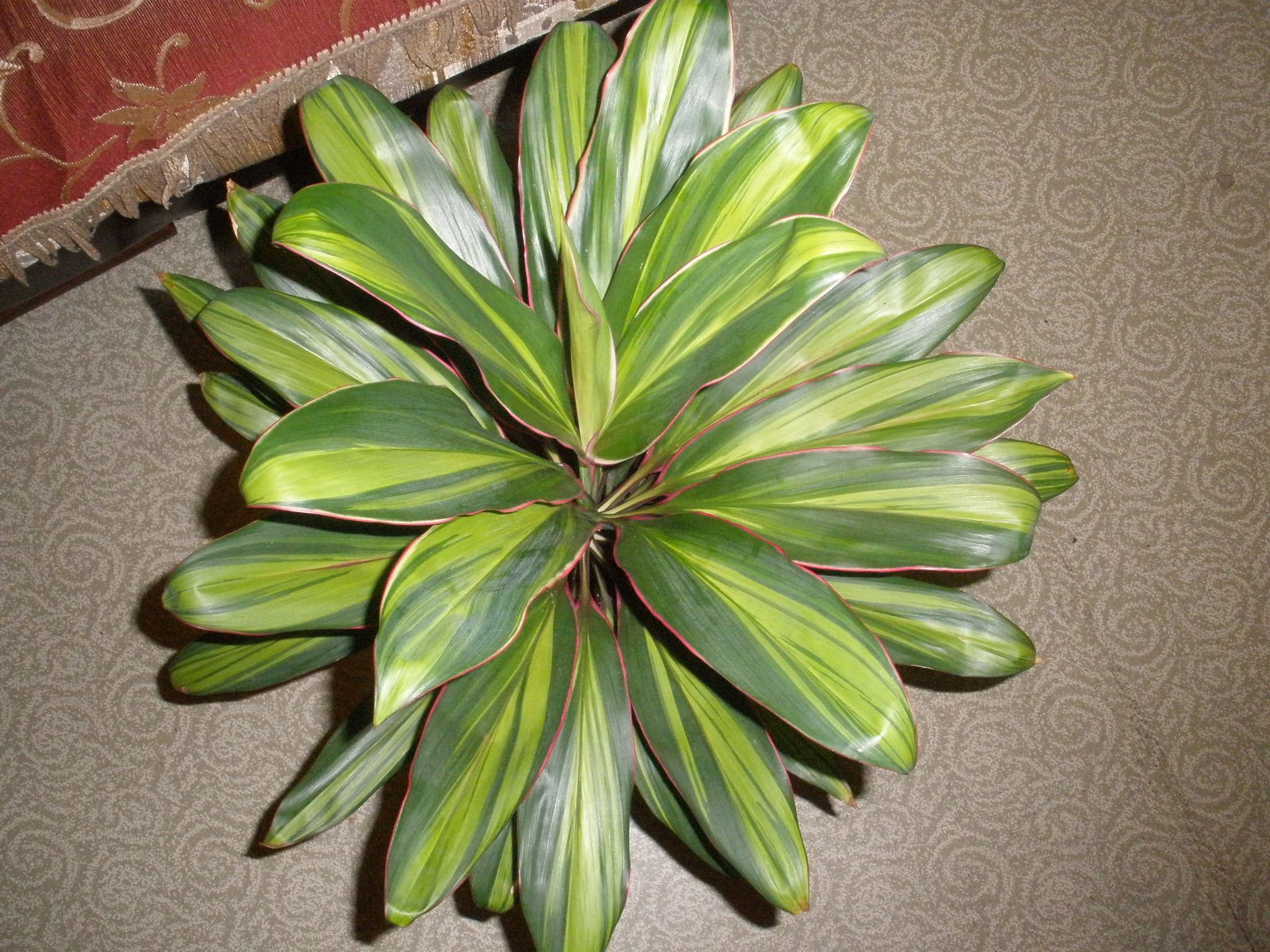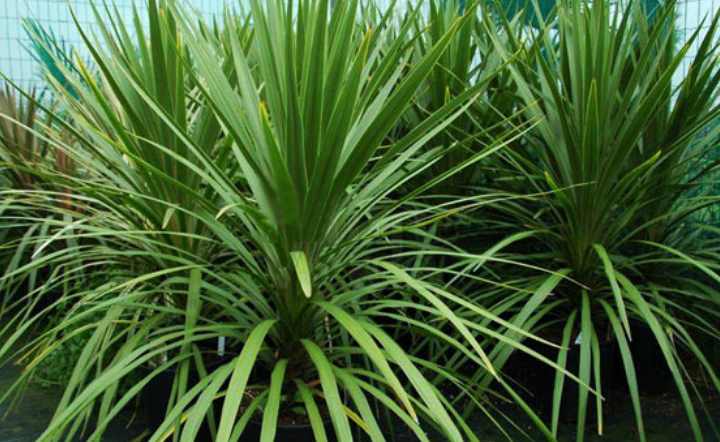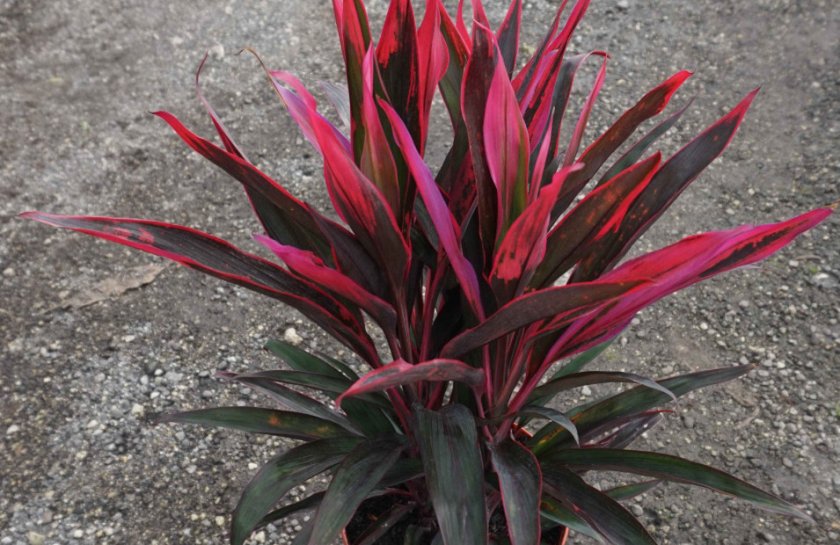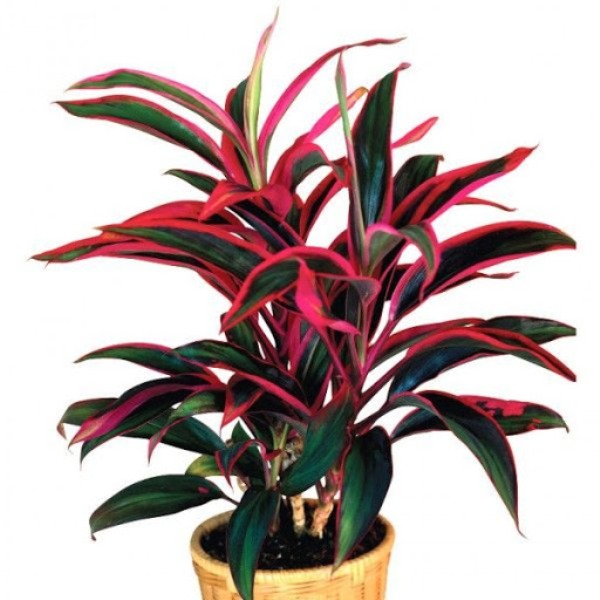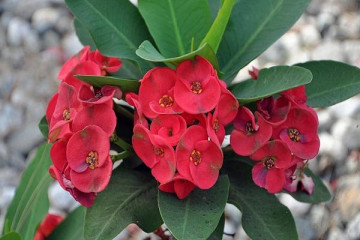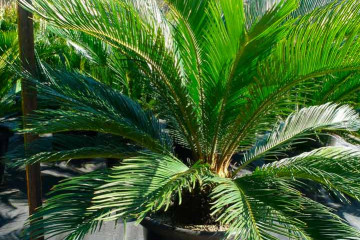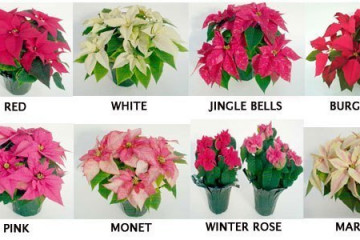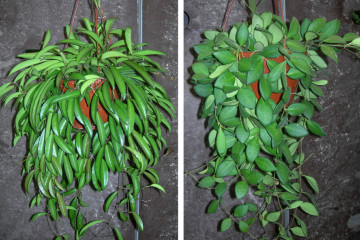Cordilina flower - types, varieties, how to care
Content:
The beautiful, colorful cordilina flower won the love of flower growers not only in appearance. He has no special care requirements, it does not grow too quickly, releasing wide colorful leaves. Such a phyto-friend will settle in the house for a long time, the main thing is to know just a few secrets about this exotic handsome man.
What does cordilina look like, which family does it belong to
A vibrant inhabitant of the subtropics and tropics is represented in both hemispheres. But to which family the cordilina belongs is still debated. The family of agave, asparagus or dracene are three variants of the relationship of this exotic. But in Russia, ordinary people themselves classified the flower and call it dracaena cordilina without any problems.
Cordilina is a flower that is a tall shrub or semi-shrub, some species look like trees.
- In the wild, it grows up to 40 meters in height. At home, it can reach 1.5 meters.
- The trunk is covered with long leaves on petioles.
- Leaves are either lanceolate or xiphoid.
- Color - bright green, colored varieties are decorated with pink, white, yellow stripes.
- Species such as cordilina fruticose are capable of expelling lateral shoots and branching.
- The inflorescence looks like a panicle.
Healing properties
The roots of the plant are used as an antiseptic and in the treatment of kidney diseases, as a diuretic.
Briefly about the history of appearance
Although cordilina has spread throughout all the subtropics and tropics of the planet, the cradle of the exotic is the Indian Islands. From Polynesia, the plant got to the Hawaiian Islands and New Zealand. It was brought on purpose, as a cultivated plant.
Rhizomes are used for food, they are very satisfying and sweet. And the leaves are added to salads, hence the plant's nickname - the cabbage tree.
Common varieties
Among all 20 plant varieties, the most popular are those with bright and variegated leaves:
- Cordilina South straight. This beauty is very similar to Dracaena. The short trunk has thin and elongated leaves. The shrub grows up to a meter in height.
- The tricolor variety belongs to the apical type of cordilina. On one leaf plate of this shrub, green, cream and pink tones are combined.
- Cordilina green Kiwi is a dense shrub with bright green leaves with yellow stripes and a raspberry border. The rumba and tango varieties have the same color only without the yellow stripes, which is why they are often confused with kiwi.
- The chocolate queen is a beautiful combination of green, chocolate, white and purple streaks on a leaf plate.
- Cordilina is red or apical. The unusual red color of the wide leaves of this palm is mesmerizing. With a lack of light, its leaves are green with red stripes.
Different flower varieties are often combined on one pallet into colorful mixes.The variety of plant shades creates a wonderful composition.
Cordilina - home care
Variegated shrub varieties maintain abundant lighting. And the tropical climate of the homeland has left love for moisture and warmth. For the rest of the care, cordilina does not require special skills, she is able to put up with the living conditions in the apartment.
Temperature
In matters of temperature, it is important to maintain stability. The plant will not tolerate temperature changes, even from a draft.
Comfortable temperature for growth is 18-23 ° C. In the warm season, the plant can be taken out into the open air. In this case, it is important not to miss the onset of cold weather. A drop in temperature below 12 ° C will destroy the flower.
Lighting
An east or west window is a great option for this "palm". A lot of light is needed, but it is important that it be diffused. It is in this combination that the leaves reveal the full range of their rich colors.
Watering
The delicate roots of the cordilina palm will be painful to both excess and lack of moisture. The intensity and frequency of humidification depends on the temperature, the higher it is, the more often watering should be.
This procedure can be easily adjusted as the top layer of the potting medium dries. Cold water encourages rot.
Spraying
A resident of the tropics responds positively to high levels of humidity and frequent spraying.
In low temperatures, this should be done carefully. Excess moisture accumulates at the base of the stems and can cause rotting or the appearance of fungi.
- In winter, you need to spray the shrub no more than once a month and only with warm water.
- In summer, you can spray often, but not intensively, creating a cloud of moisture over the greenery.
Humidity
In the summer, a pot with a flower is placed on a tray with damp pebbles, or containers with water are placed next to the pot.
Priming
When purchasing a ready-made soil mixture, it is better to give preference to soils for tropical decorative deciduous exotic plants. The finished soil will contain all the necessary nutrients that will support the bright color of the leaves.
If you mix the substrate yourself, you should take into account that the plant needs a nutritious, but at the same time, light soil. Manure (necessarily rotted), sod land serves as a nutrient base. Leafy soil and sand will lighten the mixture.
Top dressing
To maintain the unusual color of the foliage, it is important to replenish the soil with a full range of micro and macro elements. For the balance of nutrients, you should choose complex fertilizers, or special ones for decorative leafy indoor flowers.
From the beginning of active growth until late autumn, the frequency of top dressing is once every 7-10 days. If the conditions of keeping in the winter period do not change and the plant is not satisfied with the rest regime, complementary foods can be applied once a month.
Features of care in winter, dormant period
In winter, due to the reduction in lighting, cordilina can be put into sleep mode. For this, the temperature is reduced to 15-18 ° C.
At the same time, moisture is reduced, and complementary foods are completely removed. To prevent the leaves from stretching, the flower is removed from the window and the pot is placed in partial shade. After a dormant period, the plant grows more intensively its green mass.
If it is possible to highlight the greens, the temperature and moisture remain within the normal range.
When and how it blooms
Already adult specimens bloom and only in suitable conditions. A tall burgundy panicle is thrown out in the summer.
The flowers look like stars at the end of an oblong tube.Creamy white lilac or pink with a bunch of yellow stamens.
In the process of blooming, they wrap their petals. Flowers consist of six petals, 5-7 stamens in the center.
The plant blooms in summer and fades very quickly. If the cordilina is comfortable, it can throw out the peduncle at other times of the year.
Changes in care during flowering
As soon as the flower has released the arrow of the peduncle, it is important to direct attention to air humidification and watering regime. Dryness of the soil during this period can affect the appearance and health of the flower. Flowering is supported by "unscheduled" feeding.
After wilting, the panicle is cut off so that the plant does not waste energy on ripening fruits and seeds.
Pruning
Cordilina lends itself well to crown molding. Whether it is a shrub, a tree or a palm tree, pruning will only improve the appearance and growth rate of the exotic.
How cordilina reproduces
Home care and reproduction are uncomplicated. Cordilina easily sprouts, both in water and in soil. It takes root just as quickly. And you can get a new plant in several ways.
Germinating seeds
Not a very popular way. Seeds lose their germination over time, so it is important that they are fresh but ripe.
Seeds are sown in early spring. A mixture of sand and peat is poured into a common box or pot. Seeds are sown on damp ground, the box is covered with glass or foil.
The temperature for seedlings should not fall below 25 ° C. The optimum humidity is 60% - for uniform humidification, it is better to spray water from a spray bottle.
After the appearance of a couple of real leaves, the seedlings are ready for picking into individual pots. A young flower of cordilina requires more attentive home care, especially to watering.
Rooting cuttings
Cuttings are cut from already adult shoots, the trunk of which has hardened and changed color. It is better to cut a little obliquely with a sharp knife in one motion.
The length of the cutting is calculated by the number of knots on a branch up to 4 pieces. Cuttings can be immersed in water, or directly into a mixture of sand and peat. Rooting temperature - + 25 ° С and high humidity. New leaves appear after 2-3 weeks, which confirms successful rooting.
Air layering
In this way, cordilins take root, the shoots of which do not harden over time. Bending branches are pinned with hairpins to the soil in a nearby pot and buried in the ground. Only when several new leaves appear on the new layer, can the shoot be cut off from the mother.
Other options
Some types of cordilins release air roots under the nodes. They root wonderfully in a pot or a bag of soil, which should be placed on the branch itself. When the roots appear and get stronger, the young plant can be cut off.
Transfer
It is important to create an air cushion in the pot during transplanting. Do not crush the soil or deepen the roots of the plant. It is also important to make the soil mixture as light and breathable as possible.
A transplant for a young flower is necessary every spring, before active growth begins. An adult plant is transplanted once every 2-3 years, but the topsoil should be renewed annually.
The pot must have good drainage. A layer of expanded clay at least 3 cm and several holes in the bottom of the pot.
Possible growing problems and diseases
Dracaena cordilina cannot be called painful and problematic. But the gaps in the important moments of her departure will make themselves felt.
The discharge of leaves that have darkened before this indicates an excess of moisture and the beginning of putrefactive processes inside the pot.
Color loss is the result of diminishing light. Moreover, not only its intensity, but also its duration. This phenomenon is usually observed in the autumn-winter period, which is why additional illumination of the green mass is required to maintain the color of the foliage.
If the tips of the leaves dry, there are several reasons for this behavior:
- low humidity;
- lack of moisture;
- drafts.
A prompt solution to the problem will not spoil the decorative effect of the entire plant. But the damaged leaf can no longer be restored.
If the leaves first turn yellow and then fall off, then this is a natural process for the plant. Old leaves just die off.
Pests
Among indoor parasites on an unkempt cordilina, scale insects, aphids, thrips and cobweb mites can start. The fight against them is carried out in three stages:
- Warm shower for the green part of the plant. Suitable for fighting in the early stages of infestation and with a small number of insects.
- Processing of sheet plates with soapy water.
- Treat with a special preparation and, if necessary, repeat after a week.
It is important to control pests separately from other plants, separating the affected flower.
Signs and superstitions
Ever since the settlement of the flower on the islands of India, many aborigines planted this beauty at the entrance to their homes. People believed that cordilina brings happiness to the home and creates a favorable aura.
It is easy to care for and such a beautiful flower. Cordilina does not grow very quickly, increasing its green mass year after year. It remains only to decide on the choice of the variety of this tropical beauty, and how to care for her is already known.

